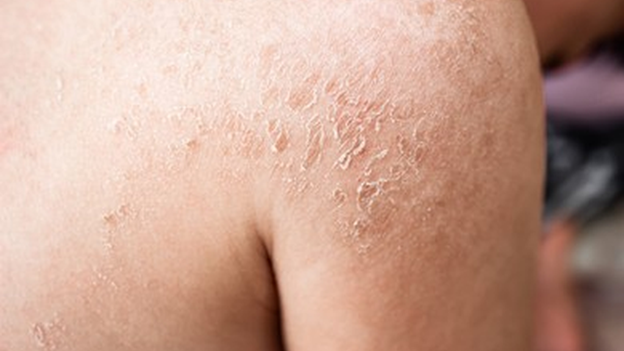Introduction
Sunburn, a typical consequence of too much sun exposure, is common in India, where the sun shines brightly for the better part of the year. Many assume it’s just a temporary skin redness after a day at the beach or pool, but there is more to it. Sunburn can affect anyone, even those not frequenting sunny terrains. Understanding its effects is vital for everyone. Knowing what happens to your skin after you experience sunburn makes it easier to prevent further harm. Being informed not only helps in treating sunburn effectively but also aids in long-term skin health.
Understanding Sunburn: The Basics
Sunburn happens when your skin gets too much ultraviolet (UV) light. This process results in your immune system reacting, causing inflammation. Our skin contains melanin, a pigment that offers some protection against UV damage. However, people with less melanin tend to be more vulnerable to sunburn. Common symptoms include redness, tenderness, and swelling. In more severe cases, you might see blisters and experience skin peeling. Typically, symptoms begin within an hour of sun exposure and can peak around 12-24 hours later, making it important to recognize and take prompt sunburn treatment measures.
Immediate Impacts of Sunburn on Skin
When you get sunburn, the immediate effects on your skin can be very uncomfortable. You might feel burning or stinging sensations, and your skin can become swollen. Sunburn can also result in fever and feelings of nausea. As your body tries to heal, it will eject damaged skin cells, which is why peeling occurs. During this time, your skin becomes more sensitive, making it easier for infections to set in. To avoid further damage, proper sunburn treatment is crucial in addressing and soothing these immediate effects.
The Invisible Effects: Beneath the Surface
Even if the surface signs of sunburn fade, damage below the skin can linger. UV rays inflict deep cellular damage, impacting skin elasticity. Your body’s response involves increased blood flow to the affected area and sends repair cells to heal the damage. It’s crucial to understand that sunburn and even tanning are indicators of damage to your skin caused by sun exposure. While tanning might seem less severe, it is a sign of your skin getting hurt.
Long-Term Consequences of Sunburn
The long-term consequences of sunburn can significantly impact your skin’s health and appearance. Frequent exposure can lead to premature skin aging, manifesting as wrinkles, a leathery skin texture, and age spots. Alarmingly, recurrent sunburn increases the risk of skin cancer, including basal cell carcinoma, squamous cell carcinoma, and melanoma. In fact, having five or more sunburns doubles your risk of developing melanoma. Moreover, your skin can undergo permanent changes like developing lentigines, which are small brown spots, and increased sensitivity to sunlight. Therefore, avoiding sunburn can save you from these unpleasant long-term effects and foster healthier skin.
Identifying High-Risk Groups
Certain individuals are more prone to sunburn than others. People with fair skin, children, and those with a family history of skin cancer are at greater risk. Environmental factors also play a role; for example, higher UV indices, reflective surfaces like water and sand, and high altitudes increase the chances of getting sunburned. Knowing if you or your loved ones belong to these groups can help you take preventive actions against sunburn.
Preventing Sunburn: Effective Strategies
To protect your skin, maintaining sun-safety habits is key. Here’s how you can avoid sunburn:
- Avoid sun exposure during peak hours (10 a.m. to 4 p.m.) when UV rays are strongest.
- Use broad-spectrum sunscreen with an SPF of at least 30, and reapply every two hours or after swimming or sweating.
- Wear protective clothing, such as long-sleeved shirts and pants, wide-brimmed hats, and sunglasses with UV protection.
- Seek shade whenever possible, if you need to be outdoors.
By following these simple steps, you significantly lower your risk of sunburn and its negative consequences. These preventative steps ensure you enjoy the sun safely without harming your skin.
Steps for Recovery: Treatment Guide
If you experience a sunburn, prompt sunburn treatment can alleviate discomfort. Here’s a simple guide:
- Cool down the affected skin with compresses or take a cool bath.
- Apply aloe vera or a moisturizer to soothe skin and retain moisture.
- Over-the-counter pain relievers like ibuprofen can help manage pain.
- Avoid peeling skin as it can lead to infections and scars.
- Seek medical attention if you have severe symptoms like blistering over large areas, high fever, or extreme pain.
By following these steps, sunburn treatment effectively reduces discomfort and helps skin recover.
Conclusion
Protect Your Skin with Expert Care at Anantha Reddy Critical Care
Ignoring sunburn can lead to long-term skin damage. At Anantha Reddy Critical Care, we offer personalized treatment and guidance on sunburn prevention and skin health.
Book your consultation today to safeguard your skin and ensure its long-term health!



